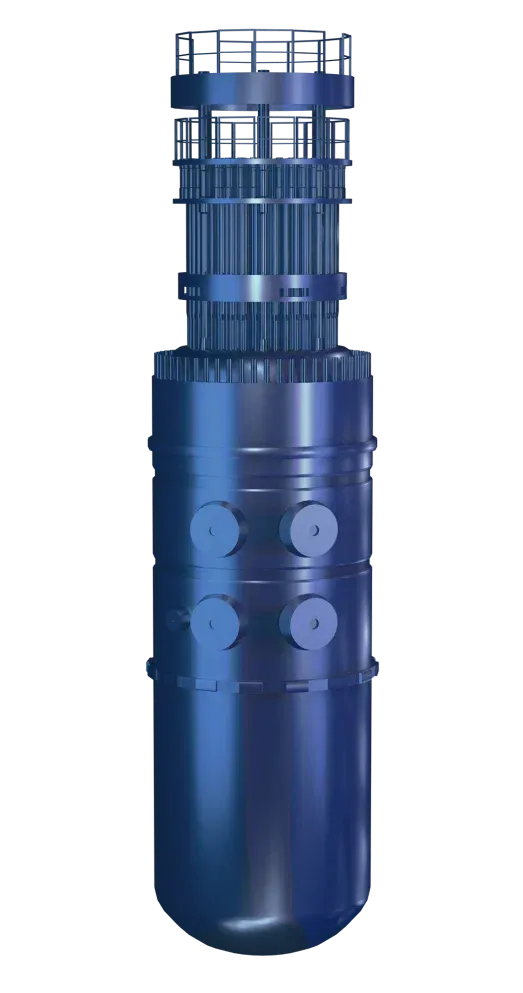VVER-1200
The basic model of a water-cooled power reactor is developed on the basis of VVER-1000. It is supplied to nuclear power plants in China, Bangladesh, Belarus and other countries. For the first time, VVER-1200 uses unique technical solutions in the field of safety, which make it possible to classify the reactor plant as a generation III+ plant.
8 reactors
shipped
14 reactors
planned to be shipped by 2031
Advantages over VVER-1000:
01
2 times longer service life
02
20% higher electrical output
03
Additional security systems
Specifications
3 200 MW
Thermal power
1 200 MW
Electric power
28 800 MW
The amount of energy generated per day with an 18-month fuel cycle
72 hours
Time to ensure autonomy of the plant operation in case of a beyond design basis accident
70 MW*day/kg
Maximum fuel burnup
163
Number of fuel assemblies
Economic characteristics
60 years
Life cycle
90 %
Installed capacity utilization factor
18 months
Duration of work without refueling
35,9 %
Efficiency (COP)
4 years
Overhaul period
Production process

01
02
03
04
05
Production of metallurgical blanks
Bottom stamping
Welding, surfacing and heat treatmentа
Mechanical treatment
Tests
Metallurgical blanks for the reactor vessel are supplied from the AEM-Special Steels metallurgical complex. Large-sized workpieces undergo incoming inspection, mechanical processing of surfaces and edges for welding on lathes. After the control operations, the blanks enter the following technological stages: assembly and welding.
A slab of pearlitic steel is heated in a furnace at 1,000 °C and then placed under a press with a maximum force of 15,000 tf, which forms the bottom of the slab. The double-acting hydraulic sheet punching press is unique and the only equipment in Russia that can stamp bottoms from workpieces up to 380 mm thick.
Assembly and joining of two half-vessels and welding of the closing seam are one of the key stages of the reactor vessel manufacturing cycle. Welding and surfacing are carried out automatically using a special installation. Heat treatment of blanks is carried out in gas-flame chamber furnaces to obtain the highest performance characteristics of products.
The machining process includes the manufacture of threaded holes for the studs of the main connector of the reactor vessel, as well as general work on the finishing of surfaces, welds, nozzles, drilling holes in the internals
During the entire reactor manufacturing process, most of the time is devoted to control tests. X-ray control units are used to detect defects in thick-walled products. The control of welded joints is ensured by the use of color and ultrasonic flaw detection technology. In a specially equipped underground stand - a caisson - hydraulic tests are carried out. A pressure of 25.7 MPa (262 atm) is injected into the body, in ten minutes the pressure should not fall below 24.5 MPa (250 atm).
In total, hundreds operations are carried out after docking of the reactor half-vessels. Particular attention is paid to non-destructive testing methods.
In total, hundreds operations are carried out after docking of the reactor half-vessels. Particular attention is paid to non-destructive testing methods.
Supply references
|
Bangladesh
| Rooppur Nuclear Power Plant | Unit No. 1,2 | VVER-1200
|
|
Belarus
| Belarusian NPP | Units No 1, 2 | VVER-1200
|
|
Russia
| NPP Leningradskaya-2 | Units No 1, 2 | VVER-1200
|
|
Russia
| Novovoronezh NPP | Units No 6,7 | VVER-1200
|



